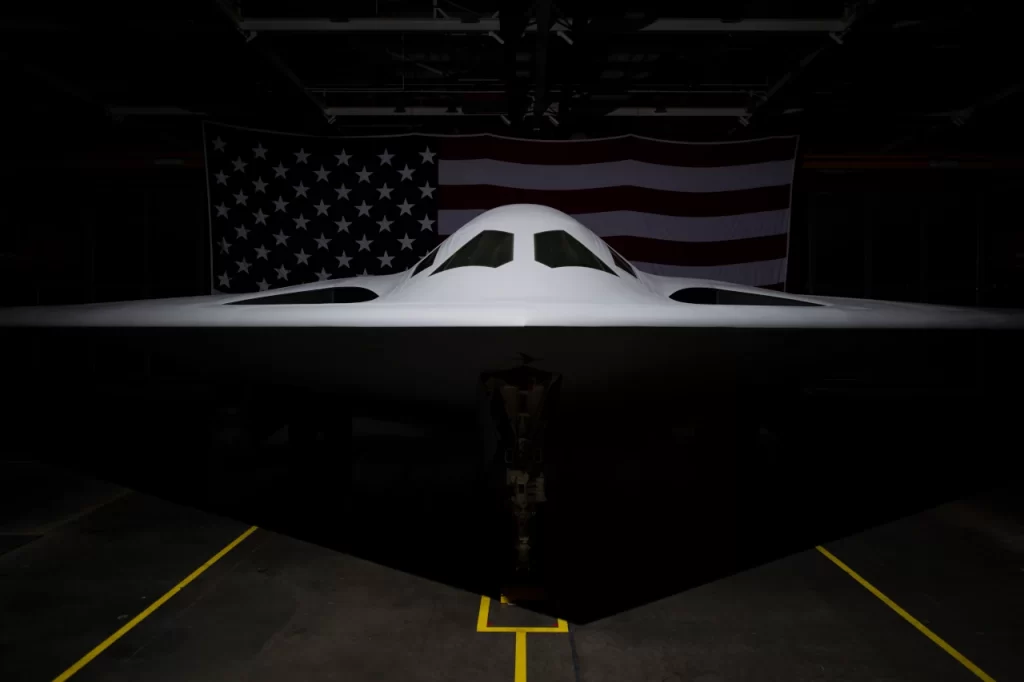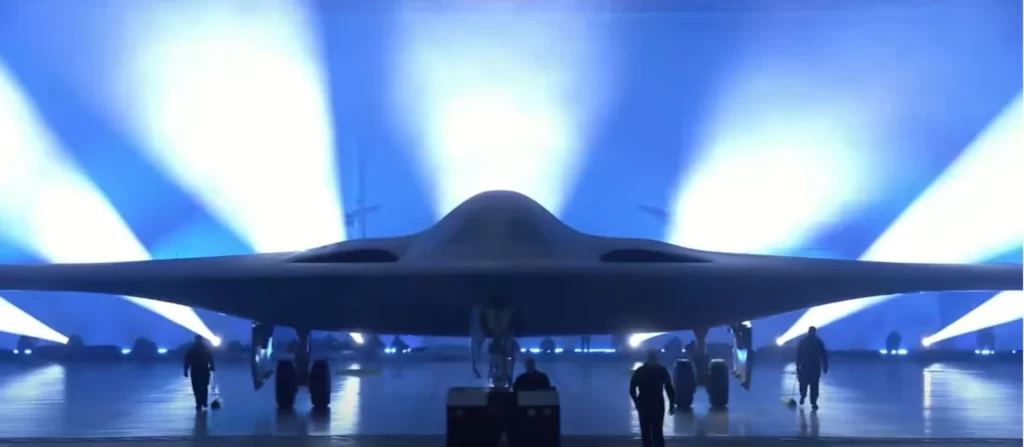On December 2, 2022, the U.S. Air Force (USAF) unveiled the sixth generation B-21 Raider, the first new long-range stealth strike bomber and an aircraft designed to serve as the multipurpose backbone of the upgraded bomber force. The revealed image is even worse than the artist’s first impressions of the plane. The landing gears are visible in the live stream video, but the entire plane is shrouded in blue lightning with black shadows.

The formal unveiling ceremony hosted at the Northrop Grumman Corporation’s California production facilities is a significant milestone in the USAF’s effort to modernise its combat capabilities, even though the B-21 is not expected to be operational and inducted into service for several years. The B-21 is planned to be a more capable and versatile, cutting-edge aircraft that will eventually replace the ageing B-1 Lancer and B-2 Spirit bombers that are currently in service.
The B-21 stealth bomber is a long-range stealth bomber that is highly survivable and capable of delivering a mix of conventional and nuclear weapons in accordance with the requirements established for its design. The aircraft will play a significant part in supporting the goals of the national security programme and reassuring allies and partners of the United States all around the world.
The National Defense Strategy and other studies, according to senior officials in the Department of Defense, make it abundantly evident that the B-21 and its capabilities are required.

During the event, Secretary of Defense Lloyd J. Austin referred to the B-21 Raider as the first strategic bomber to be produced in more than three decades.
According to Austin, the B-21 represents American deterrence in its purest form. This is not an average aeroplane in any way, and this is not only an additional acquisition. It is the physical manifestation of the United States of America’s resolve to protect the republic and demonstrates the effectiveness of its deterrence strategy, which is supported by the capabilities necessary to implement it at any time and in any location, he added.
Since the last modern bomber was introduced in 1988, the world and its dangers have changed considerably, as has the way the Air Force, other U.S. Armed Forces, and its allies work together as a combined, multi-domain force. According to senior defence officials, fresh ideas and innovations are required to combat new and emerging dangers.
Officials of the United States Air Force anticipate an eventual fleet of at least 100 aircraft with an aggregate procurement unit cost need of $692 million in 2022 currency.
The aircraft is designed with up-to-date stealth qualities and mission flexibility that Air Force and Department of Defense leaders say are necessary to achieve the U.S. objective of integrated deterrence and, if necessary, the capabilities that are required to respond to hostilities anywhere in the world, at any time. These characteristics are incorporated into the aircraft during the design process.
The B-21 has the capability of networking throughout the battlespace to many systems as well as into all domains. The B-21, which is supported throughout its existence by a digital ecosystem, is able to rapidly evolve through the implementation of rapid technological upgrades, which provide new capabilities to keep up with any future dangers.
The B-21 launched on December 2 is one of six currently in production. Each aircraft is designated a test aircraft, yet they are constructed on the same assembly line and with the same tools, techniques, and technicians as production aircraft. This approach has enabled manufacturing engineers and technicians to document lessons gained and directly apply them to subsequent aircraft, thereby emphasising consistency, producibility, and quality.
The time for the first flight will be data and event rather date driven.
Even though the precise date that the B-21 will be put into service is unknown, choices regarding its bases have already been taken. The B-21 will make its debut at Ellsworth Air Force Base in South Dakota, which will serve both as its first Main Operating Base and as a formal training unit. Whiteman Base in Missouri and Dyess Base in Texas are the two locations that are currently being considered for the remaining home bases. Each will get an aircraft as soon as one becomes available.

In addition to developing a bomber with cutting-edge technology and capabilities, the authorities in charge of the Air Force emphasised how important it was to keep expenses under control while still allowing for as much flexibility as possible.
For example, in order to keep up with a highly competitive threat environment, the B-21 has been designed with an open systems architecture. This will make it easier to quickly integrate any new capabilities that may be developed in the future.
To control programme costs, the B-21 design is based on firm specifications and existing mature technology. In fact, Northrop Grumman, the plane’s prime contractor, has been instructed to adopt production techniques, production tooling, and a production staff that ensures continuous, cost-effective manufacturing.
